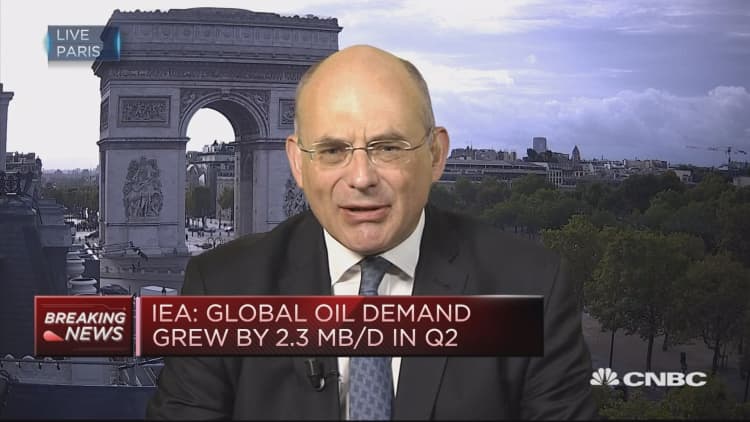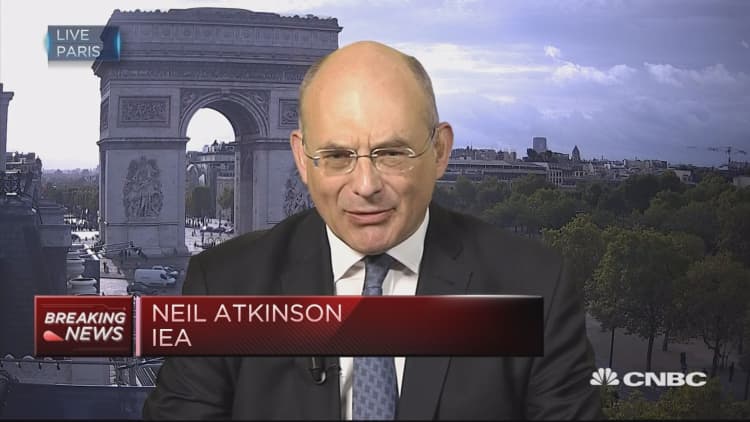
Oil prices rose on Thursday, a day after the International Energy Agency forecast the market would continue to tighten as fuel demand increased.
U.S. West Texas Intermdediate crude hit a nearly four-month high at $50.50 a barrel. The contract ended Thursday's trade up 59 cents, or 1.2 percent, at $49.89. WTI popped above its 200-day moving average level on an intraday basis for the first time since Aug. 10.
Benchmark Brent crude topped out at $55.99, the highest level since in five months. It was up 46 cents at $55.62 a barrel by 1:57 p.m. The contract remained in technically overbought territory for a second day in a row.
Brent has now climbed by more than $10 a barrel over the past three months and is close to where it was at the beginning of the year.

On Wednesday, the IEA raised its estimate of 2017 world oil demand growth to 1.6 million barrels per day (bpd) from 1.5 million bpd.
The agency said a global oil glut was shrinking thanks to strong European and U.S. demand, as well as production declines in OPEC and non-OPEC countries.
"The IEA revising up its 2017 global oil demand growth forecast, together with persistent weakness in the U.S. dollar index, has prompted bullish sentiment in the oil market," said Abhishek Kumar, Senior Energy Analyst at Interfax Energy's Global Gas Analytics in London.
"Anticipation is growing that this could quicken the pace of oil market rebalancing."
The U.S. dollar index was down 0.2 percent against a basket of currencies, making oil cheaper for holders of other currencies. Last week, the dollar index fell to its lowest level since the start of 2015.
The supply side of the equation also looks promising, Barclays Research said. That said, "a softer market balance is in store for next year, which should ensure an OPEC/non-OPEC deal remains in place beyond March 2018," Barclays added.
The Organization of the Petroleum Exporting Countries and other producers, including Russia, have agreed to reduce crude output by about 1.8 million bpd until next March in an attempt to support prices.

BP Chief Executive Bob Dudley told Reuters in an interview on Thursday that oil prices were likely to stay between $50 and $60 as major producers kept output restricted.
"We're all trying to make our way in this world of between $50 and $60 and I would expect that to continue."
This week's gains came despite U.S. data showing another big build in U.S. crude inventories due to Hurricane Harvey.
Data from the Energy Information Administration showed a build in U.S. crude inventories last week of 5.9 million barrels, exceeding expectations.
U.S. gasoline stocks slumped by 8.4 million barrels, the largest weekly decline since the data was first recorded in 1990. U.S. distillate stocks fell by 3.2 million barrels.
— CNBC's Tom DiChristopher and Gina Francolla contributed to this report.

